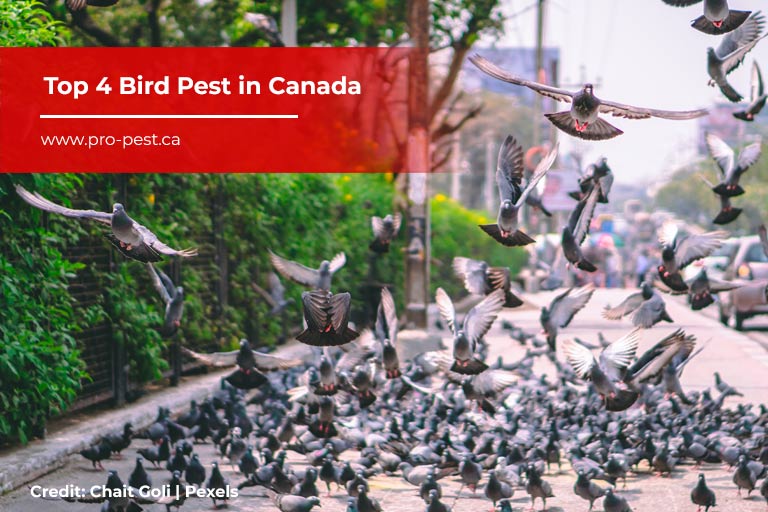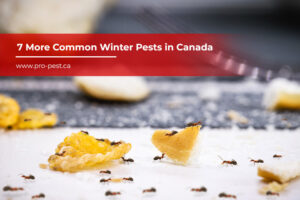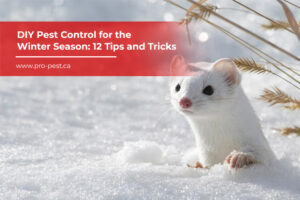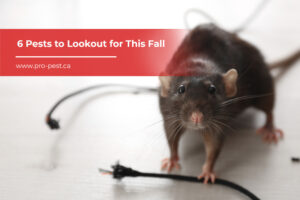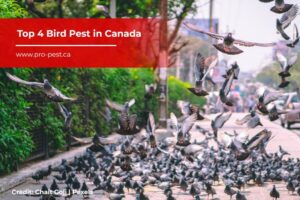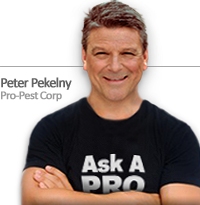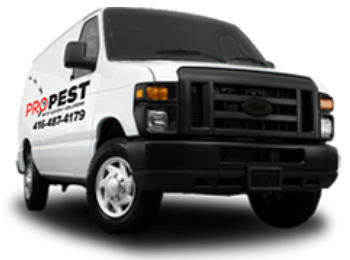Birds are one of nature’s most magnificent creatures, but they can become a major nuisance when they invade our homes, gardens, and farms. In Canada, several bird species are considered pests due to their destructive behaviour. From the notorious Canada geese to the annoying pigeons, these feathered creatures can cause significant damage to homes and even pose a health risk to humans.
Today, we will look at the top bird pests you can encounter in Canada, their habits, and the best strategies for keeping them at bay. So, get ready to discover the fascinating world of bird pests and learn how to protect yourself and your property from these feathered nuisances.
What Are Pest Birds?

The most common Canadian bird pests are the following:
- Pigeons
Pigeons are among the most common birds in urban areas. Despite their seemingly harmless appearance, pigeons have earned the unflattering nickname of “rats with wings” since they are known carriers of several diseases.
One of the most significant issues caused by pigeons is their droppings. These droppings are unsightly, foul-smelling, and highly acidic, which can corrode building materials. Breathing in contaminated pigeon droppings (via dust or water droplets) can expose you to harmful pathogens like Psittacosis and Salmonella. Pigeons can also be extremely noisy and are an atmospheric nuisance to people living and working in urban areas.
- Starlings
European starlings are an invasive species and one of the most widespread birds in North America, with a population exceeding 200 million. Although small, they are known for their ability to gather in enormous flocks of up to 20,000 birds. The sheer population of these flocks can damage trees and other vegetation. Starlings are aggressive birds and can compete with native bird species for resources, such as nesting sites and food. They are known to outcompete other bird species, leading to a decline in native populations, which can have cascading effects on the local ecosystem.
- House Sparrow
House sparrows have adapted to urban and suburban areas, especially to human-created environments. This has granted the species some security from natural predators, allowing them to thrive in areas where other bird species struggle to survive.
House sparrows are surprisingly aggressive birds known to oust native bird species from their nests, taking over nesting sites, and driving away other birds. House sparrows are also voracious eaters, consuming large quantities of food and wildlife, which can lead to resource competition and hurt the local ecosystem.
- Canadian Geese
Canadian geese have established breeding colonies in urban and cultivated areas, including parks, where they can be seen grazing on grassy lawns or swimming in nearby ponds and lakes. Despite their popularity as a symbol of Canadian wildlife, Canadian geese are often considered a nuisance.
Canadian geese are known to strip fields of crops and cause significant problems for farmers. They are also known to damage property, such as golf courses and parks. They have loud honks and calls that can be heard from a distance, adding to the noise pollution. They can also be aggressive towards humans and other animals, particularly during the breeding season when they protect their nests.
What Problems Do Bird Pests Bring?

- Health and Sanitation Risks
Birds like pigeons, starlings, house sparrows, and Canadian geese pose health and sanitation risks to humans, pets, and the environment. They can carry diseases such as chlamydiosis, avian flu, and other parasitic infections like tapeworms. Additionally, ticks, fleas, and mites frequently attach themselves to birds, which can become a health hazard when brought onto your property. Bird droppings can also make railings, steps, or fire escapes slippery and hazardous to walk on.
- Property Damage
In addition to posing health and sanitation risks, birds can cause significant property damage. Bird waste contains uric acid, which is highly corrosive and can damage wooden varnish or finish, strip away paint, and compromise the structural integrity of roofs, decks, and other structures. Bird debris, such as nesting materials, can also place undue strain on gutters, downspouts, and vents, potentially causing blockages and water damage. In some cases, birds may chew or pick away at housing material to create nests and build shelters, leading to further property damage.
- Home Interference
Birds can cause significant interference with the operation of your home or business. To build their nests, they often choose out-of-the-way locations, such as vents, gutters, rafters, ledges, or other elevated, sheltered spots. If a bird nest clogs a vent, it can reduce the air supply to your home or business. Birds nesting near electrical installations may also damage the wiring and cause short circuits, increasing the risk of electrical fires.
Bird droppings left behind in these areas can contaminate the air supply, posing a significant health risk to you and your family or employees. Debris left behind in gutters can also cause water to overflow during storms, damaging your property.
- Psychological Distress
The constant presence of birds, noise, and mess can be incredibly disruptive to your peace of mind. It’s especially true for geese, which can be incredibly protective of their young and exhibit aggressive territorial behaviour towards humans. Getting attacked by geese protecting their young is intimidating and downright scary. The emotional distress and anxiety caused by such an encounter can linger long after the perpetrator has flown away.
How to Get Rid of Birds
Bird infestations can be prevented and controlled through various exclusion methods. These methods are designed to remove any factors that attract birds, eliminate areas where they can build nests, and discourage them from returning to your property.
Some of the most common exclusion methods include:
- Eliminating sources of food – Bird feeders intended for other species should be removed as they may attract bird pests. Removing other food sources, such as uncovered garbage bins, can help deter birds from congregating around your property.
- Repairing and sealing damage – Birds can enter buildings through small cracks or openings. Identifying and repairing gaps in roofs, walls, and windows that can serve as an entry point is important.
- Covering vents and other openings – Vents and other openings in buildings that cannot be sealed should be covered with wire mesh to prevent entry.
- Placing fake predatory birds – Statuettes of birds of prey, such as hawks or owls, can be placed near ledges to create the illusion of a threat. Bird spikes, wires, and slides can also be installed around your property to eliminate perch points and nesting sites.
Are birds causing damage and health risks to your property and community? Don’t let bird pests take over your space any longer! Pro Pest Corporation is here to help your bird control problems and eliminate them. Our team of experts specializes in safe and effective bird removal methods. Reach out to Pro Pest Corporation today and call us at 416-487-4179 to schedule a consultation or request animal or wildlife removal at your Toronto property.


